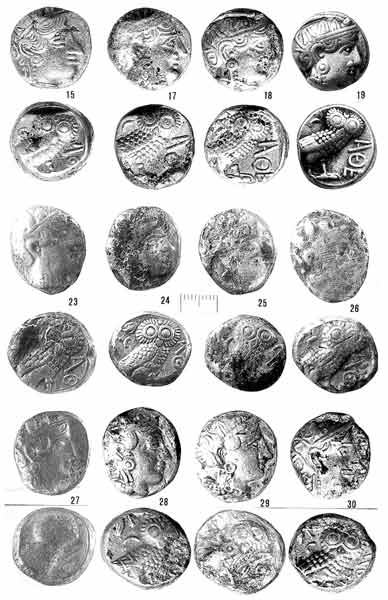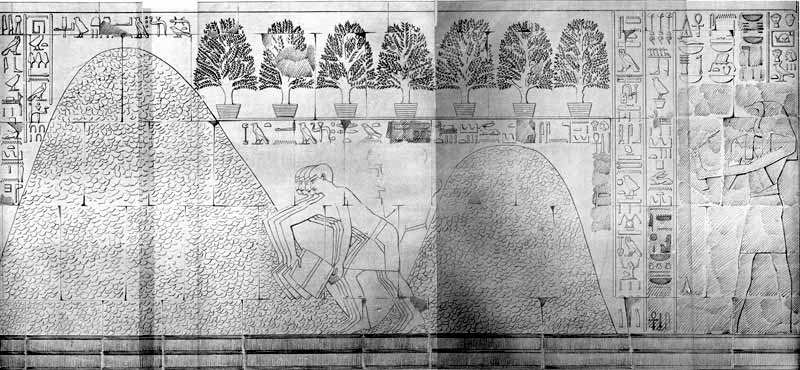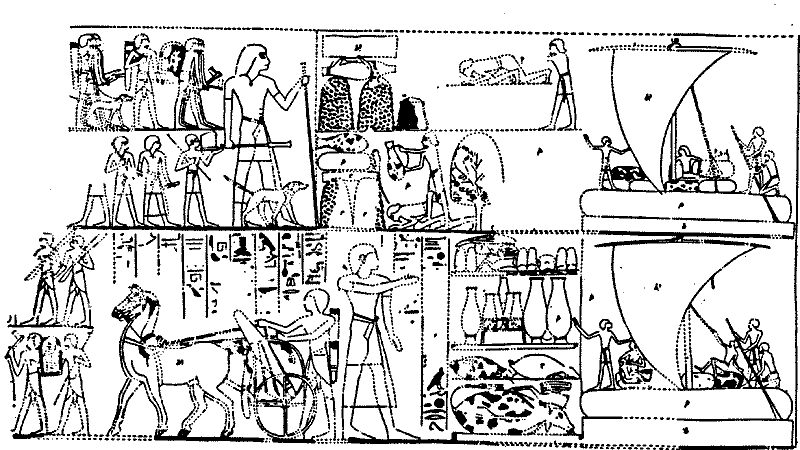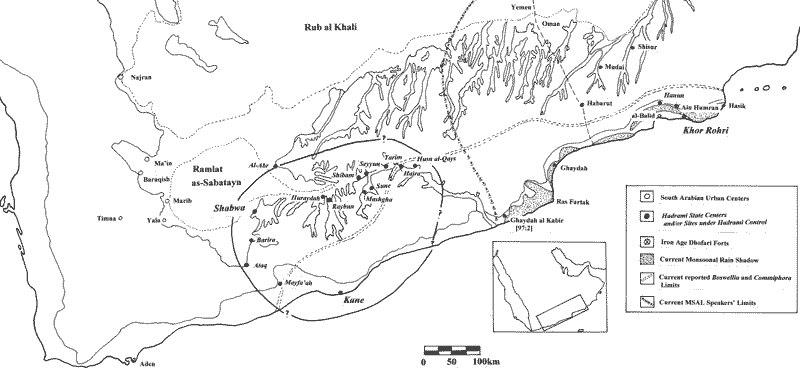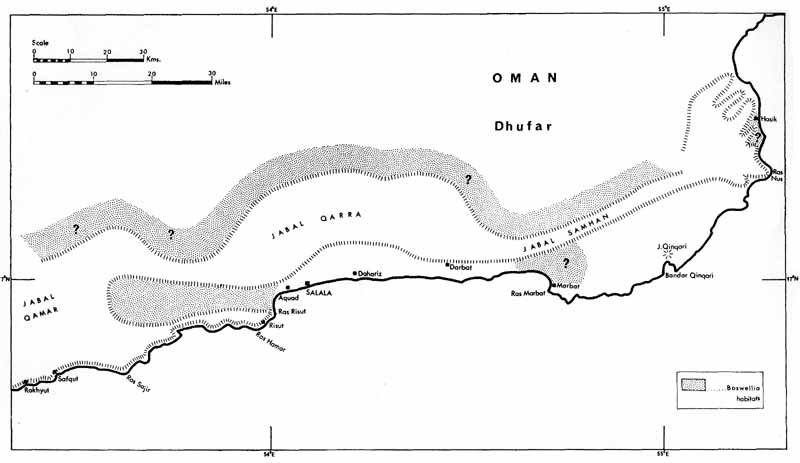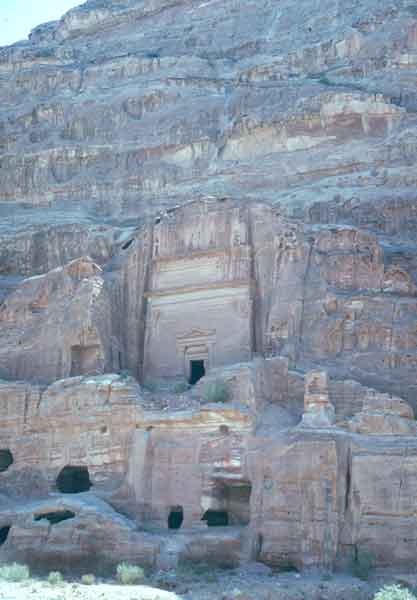The Archaeology Fund
The Economics of Trade
|
The early production of incense for distant markets must remain
necessarily vague. We know virtually nothing about production methods, personnel, harvesting, or shipping.
In Hatshepsut=s voyage to Punt, ca. 1500 B.C. the temple reliefs show incense heaped up in open piles at
Punt ready for collection by the Egyptians. Upon arrival in Egypt at such Red Sea ports as Sawwu
But, how was the incense itself collected? Again, we don=t learn of such information until the Classic period when Pliny goes on to refer to 3000 select families in the Sakalan Dhofar region [IC-056, IC-075] which were permitted to cut the trees and collect and harvest incense (Pliny, Book 12/sec. xxx). This suggests ownership of Agroves@ perhaps along a transect pattern. In the ethnographic present, ownership in Oman and Somalia is also entrusted to select chosen tribal families. Prior to 1939 in Dhofar, over 3000 people were involved annually in harvesting, some coming from as far away as Somalia. Each >authorized@ area is strictly defined and contains from 200 to 600 trees. The harvesting is timed with the advent of the hot season and begins in Somalia by the end of March and in Dhofar by the beginning of April. Based on age, size, and location, 10-30 scorings are made on each tree [IT-014]. Within each allotted plot, a rotation of trees is practiced to maximize production. Upon scoring, a white sap (luban) is extruded. The sap then crystalizes and falls to the ground where after two-three weeks it is harvested. It is placed in date palm baskets. Already in the Classic seaport of Qana, incense fragments were found with basket impressions [IC-062]. Healthy trees are tapped for three years running then placed in fallow for a number of years. Each tree is capable of producing from three to more than 10 kg. annually. (Myrrh trees produce three-four kg. per tree annually). How much incense was harvested annually? Even today, production figures are very difficult to obtain and interpret. Freya Stark suggested that 2000 tons were shipped from Shihr in 1937 alone. For all of Dhofar, Janzen quotes a figure of 7000-8000 tons for the same years but suggests a true figure closer to 5000 tons. From Somalia, a British report for 1823 suggested 2500 tons were exported. In 1929, the Italians quoted a figure from their colony of 1000 tons. From the 1980's official Somali figures quote an export of 2000 tons with a similar amount smuggled by families. Based on Egyptian, Mesopotamian and Classic period accounts, all we can suggest is that a much greater volume must have been harvested in the past. In terms of climate, we also have very little information on the past location of incense trees as opposed to the present [IT-019, IC-028]. Today, the incense is handled by a large range of middle men [Yemen botany 2.tif] and this must have been the case also in the past [IC-040]. Saleh has suggested that in New Kingdom Pharaonic times, the Gnbtyw described as middle men engaged in the incense trade may have been the precursors of the Qatabanians who were engaged as middle men in this trade in the Classic period [IC-026, IC-052]. Within Egypt itself, Saleh defines a people called Smntyw as commercial bedouin agents who acted as scouts and were aware of incense locales and directed Egyptian traffic accordingly. By the Classic period, Pliny refers to routes along South Arabian city state territories. The contemporary Periplus defines both land routes and seaports where incense was collected and sent onward IC-057, IC-011, IC-085]. In early Islamic times, the trade continued to be important with seaports described both in Yemen and Oman connected with the incense trade both to the West and East. Arab dhows collected incense twice a year (September and March). Today, handlers, transporters, packers and shippers collect the material for onward shipment to external markets. Most of the incense is now sent to Aden, Mumbai, Djibouti, Jeddah, and Dubai. Prices In sum, by the middle of the second millennium B.C., incense was a Abig business@ and production targeted for external markets to Egypt, the Levant, and Mesopotamia [IC-007]. This material was sent either by well-known sea routes, or overland caravans. Most authorities suggest the external trade peaked in Classical times [IC-25] but it is difficult to assess both the range of harvested trees and the amount of incense collected. |
|
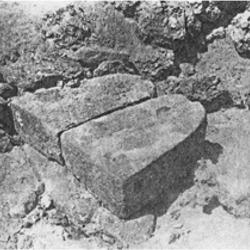 , the incense products were skiffed ashore [ES-060] and after a journey
across the Eastern Desert, were piled in rows before officials at Thebes. This recalls the 1500 years later
description in the Periplus where at Khor Rohri the incense was allowed to remain in open air piles.
Surely, however, the Egyptian incense would have been baled or crated for sea and land passage before arrival.
h
, the incense products were skiffed ashore [ES-060] and after a journey
across the Eastern Desert, were piled in rows before officials at Thebes. This recalls the 1500 years later
description in the Periplus where at Khor Rohri the incense was allowed to remain in open air piles.
Surely, however, the Egyptian incense would have been baled or crated for sea and land passage before arrival.
h